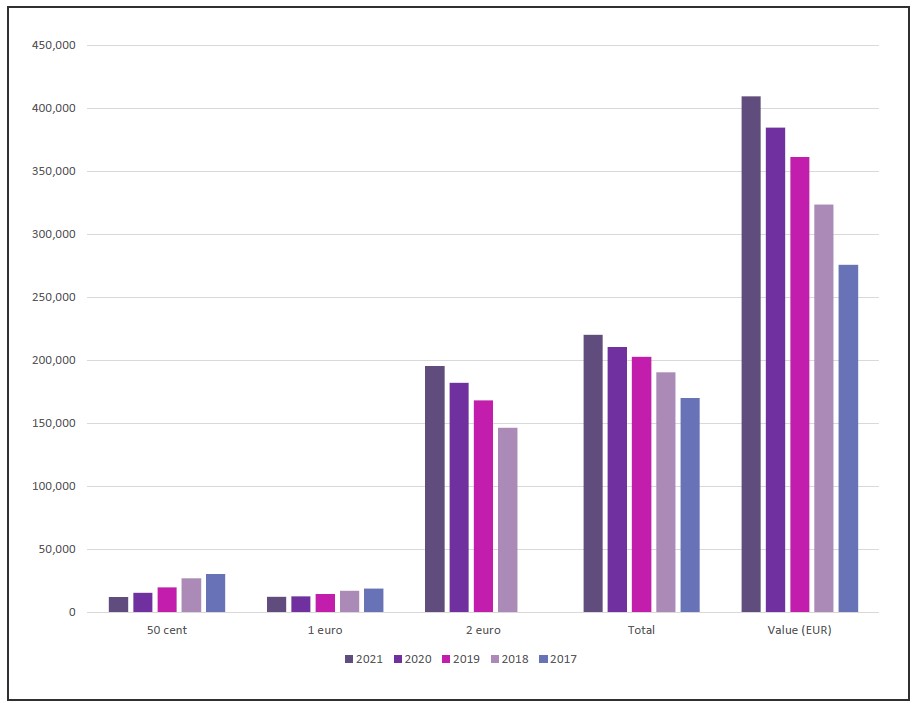



Last month, the European Central Bank (ECB) released its 2022 banknote counterfeit figures. 2022 saw the second lowest level of counterfeits as a proportion of total banknotes in circulation in the history of the euro (2021 being the lowest year). 376,000 counterfeit banknotes were seized, 96.6% of which were found in the euro area, 2.7% in non-euro European Union member states, and 0.7% elsewhere.
Whereas the ECB publishes counterfeit banknotes statistics promptly one month after the year end, the figures for euro coin counterfeits are less timely.
Coins are the competence of the national authorities of each member of the eurozone. Responsibility overall for quality, standards and security lies with the Directorate-General for Economic and Financial Affairs (DG ECFIN), under which sits the EU’s European Technical and Scientific Centre (ETSC). Its primary mission is technical and scientific analysis and classification of counterfeit euro coins. It coordinates the activities of the Counterfeit Coin Experts Group (CCEG) and assists the Coin National Analysis Centres of the member states.
The latest report on euro coin counterfeiting was published last October and covers 2021. The report noted that although the pandemic, related social distancing measures and travel restrictions affected the whole cash cycle and the activities of those involved in the protection of euro coins against counterfeiting, the number of counterfeit coins detected in 2021 confirmed the increasing trend of previous years.
The total number of counterfeit euro coins removed from circulation in 2021 was 220,314, an increase of 4.7% compared to 2020. Only 50 cent and €1 and €2 coins are included, with the latter comprising the majority of counterfeits, at 88.6%. The remainder of the counterfeits detected was split almost equally between the 50 cent and €1, at roughly 5.7% of the total each.
The number of counterfeit €2 coins rose by 7.25%, compared with a 0.59% decrease in counterfeit €1 coins and a 20.73% decrease for the 50 cent. As a result, the number of counterfeit €1 coins overtook those of the 50 cent for the first time.
The overall value of counterfeit coins detected in 2021 was also higher than the previous year, at €409,398. Overall, 3.13 million counterfeit euro coins have been removed from circulation since their introduction in 2002.
Although the majority of these coins are detected once they enter circulation, counterfeits are also regularly seized before they enter into circulation, mainly within the framework of law enforcement authorities’ operations and investigations.
The number of counterfeit coins detected before entering circulation remained relatively stable, at 12,131 coins – just 634 coins fewer than in 2020. Overall, around 787,131 counterfeit euro coins have been seized before entering circulation since 2002.
 Counterfeit euro coins detected in circulation, 2017-2021.
Counterfeit euro coins detected in circulation, 2017-2021.